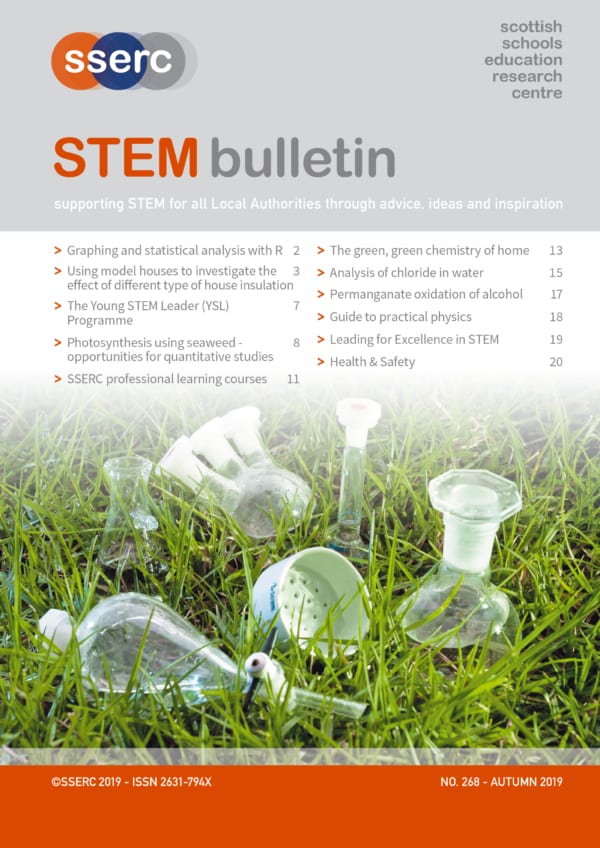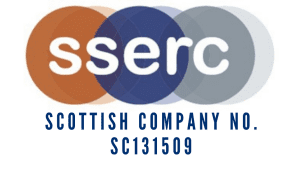Graphing and statistical analysis with R
Graphing is a really important skill in the sciences. Graphs provide an excellent way to organise data but, more importantly, such visual aids can be really useful when it comes to interpreting data and looking for patterns. One relatively easy way to get professional-looking graphs is through using the soft ware package known as R.
Using model houses to investigate the effect of different types of house insulation
Model houses are used to investigate which type of insulation has the most effect on the ambient temperature of the house. Wooden model houses for this investigation are now difficult to source from science equipment suppliers. Here we show how model houses can be made from old cardboard boxes. The houses are simple to make and robust.
The Young STEM Leader (YSL) Programme: Inspiring and developing young people through STEM
Excitement, interest and positivity around the YSL Programme continues to grow across Scotland.
Photosynthesis using seaweed – opportunities for quantitative studies
In a previous article we suggested that seaweeds might offer opportunities for studying a range of parameters in relation to the rate of photosynthesis. We described how one might measure absorbance changes in hydrogencarbonate indicator solutions in the presence of knotted wrack (Ascophyllum nodosum) as a measure of photosynthesis activity. We have described other uses of this technique on previous occasions. We describe here an updated version of our previous work and offer suggestions for how the technique might be extended to offer opportunities for quantitative studies.
SSERC professional learning courses
Our professional development courses range from twilight events, day-courses through to residential meetings lasting up to 6 days in total. Our curriculum
coverage spans both primary and secondary sectors and we offer events for teachers as part of their career long professional learning, newly qualified teachers
and technicians. Many of our events receive funding from the ENTHUSE Bursary scheme or the Scottish Government.
The green, green chemistry of home
The concept of ‘green chemistry’ appeared on the scene in the mid to late 1990s. The name certainly gives an indication but it is an approach to chemistry which aims to minimise the use and generation of hazardous substances. Green chemistry focuses on the environmental impact of chemistry, including technological approaches to preventing pollution and reducing consumption of nonrenewable resources.
We all know that seawater is salty. We also know that this is due, in the main, to the presence of sodium chloride. (To be more precise, there is not actual sodium chloride present, merely sodium ions and chloride ions along with a host of other anions and cations in smaller quantities but it is convenient to talk in terms of sodium chloride). There are also chloride ions in far smaller concentrations in many ‘fresh’ water sources. A glance at the compositions of mineral waters will show chloride as a significant component.
Permanganate oxidation of alcohols
The oxidation of alcohols is commonly carried out on a test-tube (or spotting tile) scale to demonstrate to pupils the different properties of primary, secondary and tertiary alcohols.
Leading for Excellence in STEM
Graham Donaldson, in his review of teacher education in Scotland, noted that international evidence ‘…suggests, perhaps unsurprisingly, that the foundations of successful education lie in the quality of teachers and their leadership. High quality people achieve high quality outcomes for children.’
An update on health and safety regarding aged protactinium generators.




